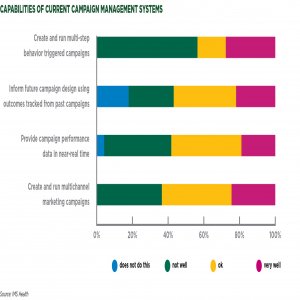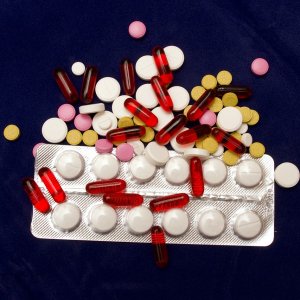Strong Base Line Boosts Innovation

STORY INLINE POST
Q: How has Hormona’s presence in Mexico evolved throughout its long history of operations in the country?
A: The current owners acquired this company in 1987. At the time, they were seeking a company which had a solid reputation within the Mexican medical community. Hormona started its pharmaceutical investments in Mexico after the Second World War, when importing drugs from Europe became very difficult. At that time there was a huge lack of product for the Mexican market, and the government was very concerned about supply, so Hormona took advantage of the opportunity to synthesize its own steroidal products and to manufacture local products for local needs, subsequently becoming one of the most important providers for the government sector. At the end of the 1990s, Hormona entered into agreements with international companies that already had strong product bases. Today, we have agreements with GSK, Novartis AG, Sanofi, Menarini, MSD, along with a number of other major companies, to sell branded generics. We have used these partnerships to transfer technology, and to build a manufacturing facility which can produce drugs in Mexico.
Q: How is the Mexican pharmaceutical industry evolving?
A: In December 2014, Mexican Official Norm 257 was implemented, which governs the conditions under which new biotechnological products can be registered, as well as renewing those sanitary registers which were approved previously. Most international companies have already conducted the major clinical trials needed for such products and have already made significant investment. Fortunately, Mexican law allows national companies to import finished products directly from abroad and to store them here, removing the need to spend millions of dollars manufacturing the products in Mexico itself and as a result, many national companies are seeking partners from abroad. The Mexican Health Ministry has created opportunities for local companies abroad though its efforts to internationalize and standardize Mexican regulations, which has opened the doors for us to internationalize. We are increasingly looking beyond Mexico for exportation opportunities. At the moment we export to Colombia, Argentina, and to five Central American countries. However, we want to look more to European, African, and Asia Pacific markets.
Q: How opposed are the viewpoints of the international and national pharmaceutical companies on this subject?
A: On one hand, there are major pharmaceutical companies which are in a strong position in terms of the resources needed to conduct the clinical trials on new biotechnological products. On the other hand, there are national companies waiting to release biosimilar products when the patent for a major biotechnological drug expires. National companies, although prepared to carry out the necessary basic trials to confirm that the drug is therapeutically safe, are opposed to carrying out the same clinical trials conducted on the drug’s original release twenty years ago. The pharmaceutical chamber, CANIFARMA, is striving to align the needs of both sides, identify lines of mutual perspective, and represent them both fairly. Finally, the Health Ministry must consider the pharmaceutical needs of the population, including the social security situation. The primary objective of COFEPRIS is to ensure that all products available to the Mexican market are manufactured using the highest standards, and that Mexicans have access to the right drugs. Ultimately, this need will be prioritized over the views of the pharmaceutical companies.
Q: What are Hormona’s main strategies as a national company to prepare for the shift to biotech products?
A: At Hormona we are reinforcing our product base line, since it is the success of those products that will provide us with the resources to invest in biotechnology. In Korea we have found two promising options for collaboration, but those in the US appear limited. There are two characteristics that we would like any prospective perfect partner to have. The first is the quality of their product portfolio. A good partner would be a company with a presence in treatments for the top five mortality causes in Mexico- diabetes, cancer, metabolic syndrome, obesity, and cardiovascular disease. We often encounter excellent companies, but with strengths in areas such as Ebola or HIV, which for us is not the right match. The government mainly purchases those types of drugs, and the reality is that just 17% of our total revenue comes from the public sector. Secondly, we want partners to be able to sign contracts for at least ten years, and have a strong pipeline for that ten-year period. We are ruling out the possibility of making acquisitions locally with the aim of saving time and resources.
Q: How do you position each new drug in the market?
A: It is necessary to recognize that today the market share of pure generics is 65%. When it comes to branded generics these drugs hold a unique place in the market, as both physicians and consumers remain loyal to specific branded generics. Twenty years ago it was easy to bring a drug to the market, but today there are so many options it is no longer straightforward. Building a brand for a generic drug is a crucial tool in gaining market share. In terms of trust for generics, consumers are confident now that if a drug has approval for the Mexican market then it meets all of the required standards. In the last ten years we have launched more than 35 products to the Mexican market, and perhaps only 20% of those are innovative drugs. However, we have also developed our own technology, which differentiates our products from other generics, and both physicians and consumers in Mexico recognize this. We have carried out our own research to improve commonly used products, reducing the frequency of dosages by developing slow-release capsules.
Q: What do you see as being the main trends that will define the future of the Mexican pharmaceutical market?
A: Undoubtedly biotechnology will define the future. Genomic medicine is another area that we are exploring, but it is still in the early stages of development. Thirty years ago, just two million people were over 65 years old. Today, there are 11 million. Over the next twenty years this figure is also expected to grow to 20 million. This poses a huge problem for the government. For the universal healthcare system, the Seguro Popular system is a huge burden. The government has to be aware of this, and the pharmaceutical companies must quickly adapt the configuration of their portfolios. Those companies that still believe that epidemiology will focus on infectious diseases in the future will not survive. Drug stores have also become a significant feature of the country’s health landscape. For the big chains, own-label drugs are not a threat to pharmaceutical companies, but rather a complementary point of sale. The days when pharmacists were the gatekeepers of all medication are now gone. The growth in over-the-counter products means that consumers play a much bigger role in choosing their own medications. The sellers, however, are not manufacturing the drugs. As such, it remains our ultimate responsibility to ensure access to quality drugs. The only problem that we have seen arising out of the trend of in-store, own-label drugs is the coinciding introduction of onsite physicians.
Q: How do you think the practice of physicians at the point of sale should be addressed?
A: We have been working with the government to highlight both the strengths and weaknesses of this market trend. There are 13,000 private clinics in the vicinity of drug stores, conducting more than 350,000 consultations per day, which equates to almost 100 million consultations per year. The health systems do not have the capacity to carry out that many consultations alone and therefore these private offices serve a function. What we are trying to do is establish a balance between the benefit and the risk, which relates to a potential conflict of interest. Doctors need to have complete professional freedom to prescribe whichever medication they believe is best, rather than being restricted to prescribing the own-label drugs available at that particular point of sale. If not, there is a clear conflict of interest. Fortunately, the authorities are examining the situation to establish the right balance. Drug stores also need to be sure that they have the right resources in place to provide for prescriptions without having to substitute alternative drugs. We have seen cases where a prescribed drug has been replaced with an alternative drug and a mistake in the name of the active ingredient led to serious health consequences for the patient. We must be ready to foster a universal health system and that means utilizing all options available while ensuring stringent quality control.
Q: What can national pharmaceutical companies do to carve out a valuable niche in the market?
A: The unique challenge for Mexican pharmaceuticals is to become powerful manufacturers while also developing their own technology. The days when the only role of national companies was to reproduce drugs upon patent expiry are long behind us. The problem is that a lot of Mexican companies are not proactively taking advantage of the opportunity to provide new technology for current drugs and differentiate their products. We believe that the future for Mexican pharmaceutical companies is to become valueadding entities by developing their own technology. Last year the pharmaceutical industry imported US$500 million worth of goods, but exported only US$100 million. At present, the pharmaceutical industry imports 90% of the Active Principle Ingredients (API) needed to produce drugs, making us dependent on external sources. To address this, we must re-establish the pharma-chemical industry in Mexico. Thirty years ago, we produced 85% of the ingredients we needed to manufacture drugs. This changed when Mexican borders were opened for trade and we are now dependent on countries like China, India, and Korea for our active ingredients. We have held dialogues with the President and informed him about our concerns. Mexico’s future governments have a big task ahead of them.























